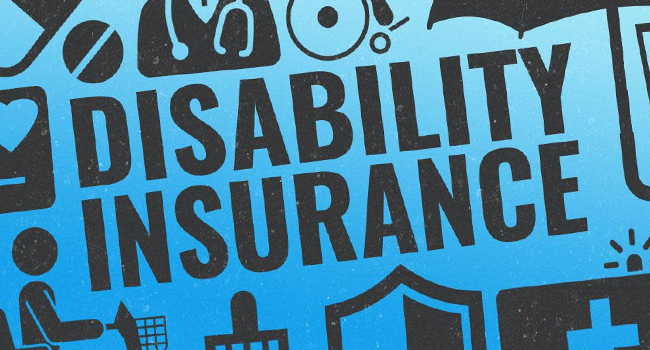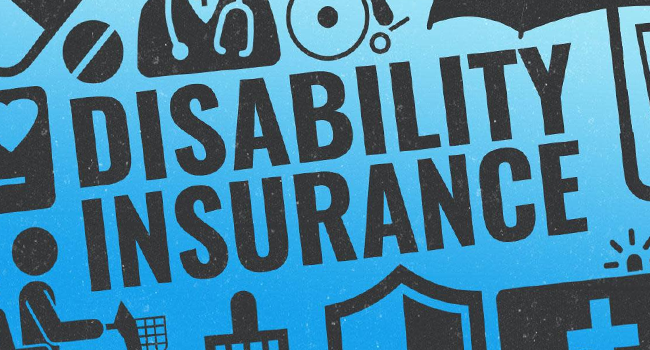
Introduction:
In the unpredictable landscape of life, where uncertainties abound, it becomes paramount to safeguard our financial well-being against unforeseen challenges. Disability insurance stands out as a crucial component of a comprehensive financial plan, providing a safety net that can protect individuals and their families in the event of unexpected health issues. As we navigate the year 2023, the importance of disability insurance cannot be overstated. In this article, we will explore ten compelling reasons why acquiring disability insurance is a wise decision in the current socio-economic climate.
Income Protection:
One of the primary reasons to invest in disability insurance is to safeguard your income. In the event of a disabling illness or injury, your ability to work and earn a living may be compromised. Disability insurance ensures that you continue to receive a portion of your income, helping you cover essential expenses such as mortgage payments, utility bills, and daily living costs.
Medical Expenses:
Disabilities often come with additional medical expenses, including rehabilitation, therapy, and specialized equipment. Disability insurance can assist in covering these costs, ensuring that you have access to the necessary medical treatments without depleting your savings or accumulating debt.
Maintaining Your Lifestyle:
A sudden disability can disrupt your daily routine and lifestyle. Disability insurance provides a financial cushion that allows you to maintain your standard of living even when faced with unexpected health challenges. This financial stability can contribute significantly to your overall well-being and peace of mind.
Debt Repayment:
With the rising costs of education, housing, and other life expenses, many individuals carry substantial debts. Disability insurance can be instrumental in repaying debts, such as student loans or mortgages, even when you are unable to work due to a disability. This prevents the accumulation of debt and the potential negative impact on your credit score.
Coverage Gaps in Employer Plans:
While many employers offer disability insurance as part of their benefits package, these plans may have limitations. It’s essential to review your employer’s disability coverage to ensure it adequately protects your financial interests. Supplementing employer-provided coverage with an individual disability insurance policy can fill potential gaps and provide a more robust safety net.
Self-Employed and Small Business Owners:
For self-employed individuals and small business owners, disability insurance is incredibly crucial. Unlike employees with employer-sponsored plans, those who run their businesses may not have access to group disability insurance. In such cases, individual disability insurance becomes a vital tool in protecting both personal and business finances.
Long-Term Disability Risks:
While short-term disabilities are more common, the financial impact of a long-term disability can be severe. Long-term disability insurance ensures that you receive income replacement for an extended period, offering peace of mind and financial security during an extended recovery.
Inflation Protection:
Disability insurance policies often come with options for inflation protection. This feature helps ensure that the benefits you receive keep pace with the rising costs of living, preserving your purchasing power over time.
Peace of Mind for Families:
Disability insurance doesn’t just benefit the policyholder; it also provides peace of mind for their families. Knowing that financial stability is assured in the face of a disability allows families to focus on providing emotional support and care during challenging times.
Early Planning for Retirement:
Disability insurance can play a strategic role in retirement planning. By protecting your income during your working years, disability insurance ensures that you can continue saving for retirement even in the face of unforeseen health challenges. This contributes to a more secure financial future.
Technological Advancements:
The integration of technology is transforming the disability insurance sector. Insurers are leveraging data analytics and artificial intelligence to assess risk more accurately and streamline the claims process. This not only enhances the efficiency of the insurance industry but also allows for more personalized and affordable coverage.
Flexible Coverage Options:
Recognizing the diverse needs of policyholders, insurers are offering more flexible coverage options. This includes customizable benefit periods, elimination periods, and coverage amounts. Individuals can tailor their disability insurance to align with their unique circumstances, ensuring that the policy meets their specific financial requirements.
Mental Health Considerations:
The awareness and understanding of mental health issues have grown significantly in recent years. As a result, disability insurance providers are placing greater emphasis on mental health coverage. Policies now often include provisions for mental health conditions, acknowledging the significant impact such illnesses can have on an individual’s ability to work.
Return-to-Work Support:
Disability insurance is no longer solely about financial compensation during periods of disability. Insurers are increasingly focusing on facilitating a smooth return to work for policyholders. This may involve offering vocational rehabilitation services, job training, or other support measures to help individuals reintegrate into the workforce after a period of disability.
Pandemic Preparedness:
The global experience of the COVID-19 pandemic has highlighted the importance of being prepared for unforeseen events. Some disability insurance policies now explicitly address pandemics, ensuring that policyholders are covered in the event that widespread health crises impact their ability to work.
Rise of Group Disability Insurance:
Employers are recognizing the importance of disability insurance as part of their employee benefits packages. Group disability insurance, offered through employers, is becoming more common. While these plans often provide a degree of coverage, individuals should carefully review the terms and consider supplementing with individual disability insurance to address potential gaps.
Online Accessibility and Education:
The digital age has transformed the way individuals research, purchase, and manage their insurance policies. Insurers are investing in user-friendly online platforms that make it easier for individuals to understand their coverage options, compare plans, and manage their policies. Online resources also play a crucial role in educating consumers about the importance of disability insurance planning.
Collaboration with Employers:
Insurers are increasingly collaborating with employers to create comprehensive disability insurance programs. This collaboration aims to ensure that employees are well-informed about their coverage options and that the insurance plans offered align with the diverse needs of the workforce.
Assess Your Income and Expenses:
Begin by evaluating your current financial situation. Understand your monthly income, essential expenses, and any outstanding debts. This assessment will help you determine the amount of disability coverage you need to maintain your financial stability in the event of a disability.
Understand Policy Terms and Definitions:
Disability insurance policies come with specific terms and definitions that can vary among insurers. Familiarize yourself with terms such as “elimination period” (the waiting period before benefits kick in) and “benefit period” (the duration for which benefits will be paid). Clear comprehension of these terms will enable you to choose a policy that aligns with your preferences.
Consider the Benefit Amount and Structure:
Evaluate the benefit amount offered by different policies. Some policies provide a fixed monthly benefit, while others offer a percentage of your pre-disability income. Choose a structure that best suits your financial needs and goals. Additionally, consider whether the policy provides cost-of-living adjustments to protect against inflation.
Examine the Definition of Disability:
The definition of disability can vary between policies. Some policies consider you disabled if you are unable to perform the duties of your occupation. In contrast, others may define disability based on your ability to work in any occupation for which you are reasonably qualified. Understanding these distinctions is crucial in selecting a policy that aligns with your specific occupation and skill set.
Review Exclusions and Limitations:
Carefully review the exclusions and limitations of each policy. Certain pre-existing conditions or high-risk activities may be excluded from coverage. Understanding these limitations ensures that you have realistic expectations about the circumstances under which your policy will provide benefits.
Explore Optional Riders:
Many disability insurance policies offer optional riders that allow you to customize your coverage. Familiar riders include residual or partial disability benefits, which provide benefits if you can work but experience a reduction in income due to a disability. Consider these optional riders to tailor your policy to suit your needs better.
Conclusion:
As we step into 2023, the uncertainties of life remain ever-present. Acquiring disability insurance is a proactive step towards securing your financial future and protecting your loved ones. The peace of mind that comes with knowing you have a reliable safety net in the face of unexpected health challenges is invaluable. In a world where the only constant is change, disability insurance stands as a steadfast pillar supporting financial stability and ensuring that life’s uncertainties don’t translate into financial hardships.
